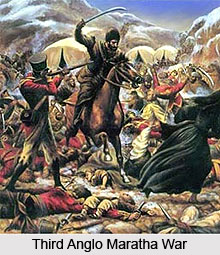 The History of Central Provinces and Berar can be traced back to the early 19th century. The Central Provinces and Berar, which existed under the rule of the British Empire in India, was located in the centre of the Indian peninsula. After the Third Anglo Maratha War, the Marathas were defeated and the regions of the Satpura Mountain Range were ceded by the Maratha Peshwa in the year 1817. It was later ceded by Appa Sahib in 1818. Later in the year 1820, the Saugor and Nerbudda Territories were formed under the Governor General. In 1835 the Saugor and Nerbudda Territories were incorporated in the newly created North Western Provinces. In the year 1842, the territories were again put under the jurisdiction of a Political Agent, also known as Resident of British India to the Governor General. The Saugor and Nerbudda Territories were restored to the North Western Province in the year 1853.
The History of Central Provinces and Berar can be traced back to the early 19th century. The Central Provinces and Berar, which existed under the rule of the British Empire in India, was located in the centre of the Indian peninsula. After the Third Anglo Maratha War, the Marathas were defeated and the regions of the Satpura Mountain Range were ceded by the Maratha Peshwa in the year 1817. It was later ceded by Appa Sahib in 1818. Later in the year 1820, the Saugor and Nerbudda Territories were formed under the Governor General. In 1835 the Saugor and Nerbudda Territories were incorporated in the newly created North Western Provinces. In the year 1842, the territories were again put under the jurisdiction of a Political Agent, also known as Resident of British India to the Governor General. The Saugor and Nerbudda Territories were restored to the North Western Province in the year 1853.
The Maratha Bhonsle Maharajas of Nagpur accepted the sovereignty of the British administration in 1818. After the death of Raghoji III in 1853, the region of Nagpur was annexed by the British East India Company under the Doctrine of Lapse, as the native ruler had no heirs. The Nagpur Province, which consisted of the Nagpur division, Chhattisgarh and Chhindwara, was managed by a Commissioner under the Central Government till the creation of the Central Provinces in the year 1861.
The Saugor and Nerbudda Territories were merged with the British province of Nagpur to form the new Central Provinces in the year 1861. Later on 1st October 1903, Berar was put under the authority and administration of the Commissioner of the Central Provinces as well. In 1905, almost all of Sambalpur and the native states of Kalahandi, Patna state, Sonpur, Rairakhol and Bamra were reassigned to Bengal from the Central Provinces and Berar. The Hindi speaking princely states of Chota Nagpur, namely Jashpur, Udaipur, Surguja, Koriya (Korea) and Chang Bhakar were transferred to the Central Provinces and Berar from Bengal.
After the Government of India Act 1935 was passed by the British Parliament, the princely states were separated from the administration and control of the provinces and came under the authority of several new agencies, which were directly accountable to the Governor General of India. After elections were conducted in 1937, N. B. Khare was appointed as the first prime minister of the Central Provinces in the same year. In the next year, the Governor took charge of the province after Khare resigned. Later Ravi Shankar Shukla was appointed as the prime minister of the province after the elections of 1946.
After the country achieved independence from the dominion of the British on 15th August 1947, the Central Provinces and Berar became a province of the newly formed Union of India. The princely states which were part of the Central Provinces before 1936 were merged back into the province, and structured into new districts. When the Constitution of India went into effect in 1950, the Central Provinces and Berar became the new state of Madhya Pradesh. Indian princely states, which were part of the Central Provinces before 1936, were merged with the province and structured into new districts. After the Constitution of India went into effect in the year 1950, the Central Provinces and Berar formed the new Madhya Pradesh state.
In 1956, some of the regions of Madhya Pradesh, which included the Berar and Nagpur divisions, were incorporated as a part of the Bombay state.






































